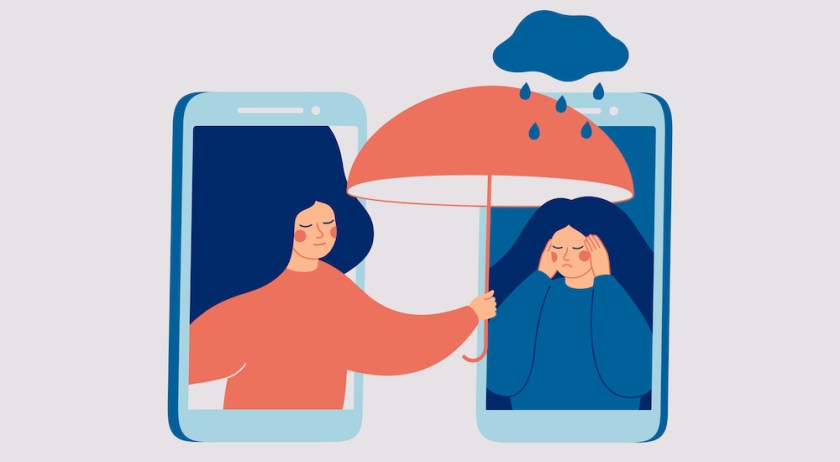We speak to Lysn psychologist Noosha Anzab on the questions to ask after “R U OK?”.
2020 has been a challenging a year. There are no two ways about it. The global pandemic brought the world to a grinding halt, and even though many of us are easing back to ‘COVID normal’, there are communities like our friends in Melbourne who are still grappling with the chaos it inflicts. That’s why it’s more important than ever to have the sometimes confronting conversations about mental health.
Today marks R U OK? Day (10th September 2020). A day where we pause and ask those around us how they are really doing. We put on our best listening ears and encourage people to open up about their feelings. However, the conversation shouldn’t stop after R U OK. Knowing what to say in reply, no matter the response you might receive, is just as important.
We spoke to Lysn psychologist Noosha Anzab on how you as an employer (or even a friend) can navigate the conversation after R U OK?
Keep the conversation going
Anzab says “R U OK” is the first question that should be followed by several more. You want to keep the conversation going, whether it’s in person, over FaceTime or text.
“Ensure your employees feel comfortable in having an open and honest conversation with you,” Anzab said.
It’s essential to keep asking open-ended questions – those that can’t be answered by a simple yes or no – to keep their response engaged. She says to actively listen and relate to what they’re experiencing when appropriate.
Be mindful of your tone
“Be mindful of your tone when having conversations about mental health as it is a sensitive topic that needs to be navigated with kindness and empathy,” Anzab said.
Conversations around mental health can be tough for some people and can leave them feeling more vulnerable and sensitive than their usual disposition. Anzab says to have these conversations when you have enough time to talk, that is, not just before you run out the door or before an appointment with a client.
“Set aside time to have a deep and open chat, ideally when you and your employee are both feeling calm and relaxed. Try to stay open-minded and never judge the other person or give judgemental responses.”
Let them know they are not alone
Approximately one in five Australians will experience a mental illness each year. To put that into perspective, that’s every fifth person you pass walking down the street. When you frame it like that, it can make the person you are speaking to feel less alone.
“There can be a myriad of emotions someone might go through when suffering from mental health concerns, so feeling as though they are not alone can be a huge help,” Anzab said.
It’s important to remind them they do not have to suffer in silence.
Offer ongoing support
“Ideally, you’ll want to ensure your employees know that you’re available all year round should they ever need support,” she said.
While it’s great to have an entire day dedicated to destigmatising mental health, it’s also a reminder that we should be asking those ‘R U OK?’ every day.
“Ensure that you voice this offer of support to them and let them know that it’s OK for them to turn to you at any time. Also recognise that if it seems like an employee is really struggling, there are professional options available to them.”
Seek professional help
Visiting a psychologist can be as beneficial to your health as going to the gym says Anzab. Lysn is a digital mental health company that connects people with a professional psychologist while also offering online tools to improve mental health. It also provides Employee Assistance Programs that can ensure your business and employees have professionals to turn to in times of need.
“By providing easier and confidential access to a range of psychologists, much of the stigma around just visiting a psychologist can be taken away,” Anzab said.
If this story has brought up any issues for you, please contact Lifeline on 13 11 14.

DID YOU KNOW
There are 5 ways you can catch up with SPA+CLINIC?
- Our quarterly print magazine, delivered to your door. Subscribe here.
- Our website, which is updated daily with its own completely unique content and breaking news.
- Our weekly newsletter – free to your inbox! Subscribe here.
- Our digital magazine – click here to view previous issues.
- Our social media – see daily updates on our Instagram, Facebook & Linkedin




